As with Uchi-uke, some people suggest that Soto-uke was originally intended to be used far more aggressively than the way we use it. It's certainly works as a hammerfist strike to many body parts, but in this instance, I suspect that it's similarity to existing strikes has caused it to be mistakenly confused with them. Of course, as ever, whatever works for your self-defence situation is fine.
In its short form, performed from a sparring guard, Soto Uke is little more than a formalised parry, tapping an attacker's strike past your body. I find this to be one of the most useful blocks in karate, and immediately followed by a side backfist using the same arm, it forms the basis of my favourite combination. Like Uchi-uke, it provides protection for the body, and can be extended upwards to protect the head. You may find synchronisation of the hips with this technique to be particularly challenging, and you will have to resist the urge to turn your hips too early.
Technique performed by Aragaki Misako
Technique:
| # | Description |
|---|---|
| 1. | Starting with your left arm in front of you, elbow bent at 90 degrees so that your fist is level with your left shoulder, and your right hand drawn back to your right side. Raise your right arm out to your right side, so that your upper arm is horizontal. Your elbow should be bent at a right angle with your forearm pointing upwards. Your forearm should be rotated so that your inner wrist is facing forwards. |
| 2. | Lower your right upper arm to about 45 degrees whilst swinging the arm forwards in an arc. As the arm swings around, start to rotate your hips as well. Your objective is to complete your arm and hip rotation simultaneously, so that you can get the maximum power from your hips. In your finishing position, your hips should be rotated 45 degrees, and your arm should extend out at right angles to your body. If you were to un-rotate your hips, you would be in the finishing position for an Uchi Uke block. |
| 3. | As you rotate into position, you should ensure that you use the inside of your wrist to block. It is only at the final moment of impact that you rotate your forearm a final 90 degrees anti-clockwise so that the inside of your wrist is facing towards your body. |
| 4. | Your left arm should start to retract as soon as your right arm starts to descend from its horizontal position. Some people argue that you should leave it in front of you as a cover or emergency guard until the last moment, but of course, in real combat, you would never prepare your other arm so far back in the first place, so there would be no need. |
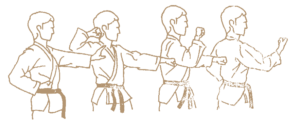
Execution of the soto-uke block.
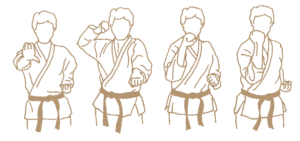
Execution of the soto-uke block.
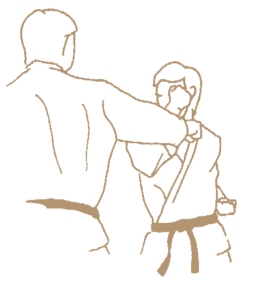
Application soto-uke block.
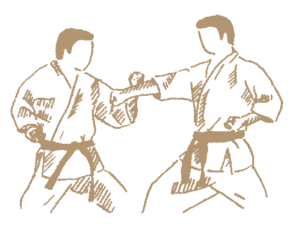
Application soto-uke block.
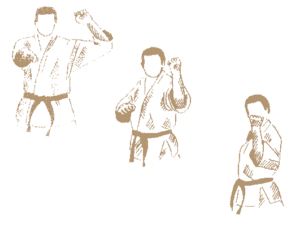
Front view soto-uke block.
Common mistakes to avoid:
- There are several common mistakes to avoid when performing Soto Uke. The first is to keep your upper arm high and horizontal as you swing your arm forwards.
- This leaves you exposed beneath your armpit and all the way down that side of your body. Ensure that you lower your arm as you swing it around.
- Another common mistake usually occurs at the end of the block, when students swing their arm too far past their body. Remember, you only need to deflect a punch past your own body. You are not blocking for two!
- The last one to watch out for is that you leave your forearm rotation until the end of the block. You do not want to block bone-on-bone!

